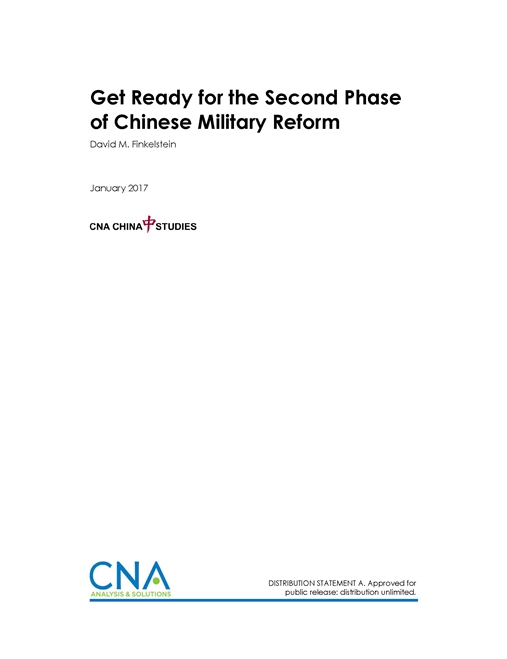- On 2-3 December 2016, Xi Jinping convened and chaired the “Central Military Commission Work Conference on Armed Forces Scale, Structure and Force Composition Reform,” a very good indicator that the second phase of Chinese military reform is about to unfold in 2017.
- The focus of the meeting, and of a major speech by Xi Jinping, was the need to rationalize the “size, structure, and organization” of the People’s Liberation Army (PLA) in order to comport with changes in modern warfare, adjustments to China’s security situation, and the expanding missions of the Chinese armed forces.
- While specifics are few at this point, it is highly likely that impending organizational changes will involve reducing the overall size of the PLA, rebalancing the numbers among the services, and reorganizing some units in some services.
- In 2017 we should expect the commencement of the 300,000-person reduction in force (RIF) that Xi Jinping announced in September 2015.
- Also to be expected in 2017, in conjunction with the RIF, is a rebalancing of numbers between the services—that is, between the PLA Army, PLA Navy, PLA Air Force, and PLA Rocket Force.
- The PLA Army will likely take the brunt of the reduction, and the PLA Navy and Air Force are expected to increase in size, although it is impossible at this point to speculate about numbers.
- Along with the reduction in force, we should also expect to see the reorganization of some operational units across the services. Once again, details are lacking at this point. Certainly the PLA Army will need to adjust its structure, assuming that it takes most of the reduction.
- Beyond changes to the line-and-block charts, or the impending RIF, we should also anticipate various systemic and institutional reforms. In particular, we should expect the PLA to significantly revamp aspects of its officer personnel management system.
- The aforementioned changes are part of the larger reform enterprise begun in 2016 and targeted for completion by 2020. The objective is to have a PLA that is more operationally capable of prosecuting joint, high-tech wars fought primarily in the maritime-aerospace domains, that operates more efficiently as an institution, and that is more tightly tied to the Chinese Communist Party.
Approved for public release: distribution unlimited.
Details
- Pages: 12
- Document Number: DOP-2017-U-014677-Final
- Publication Date: 1/6/2017
